September marks the end of the rainy season of Tibet, featuring with decreasing rainfall and cooling down temperature. Weather during this period is comfortable. It is usually sunny in the daytime, and even though there is rainfall, it only comes at nights. Therefore, tourists don’t have to worry about the rainfall and they can enjoy a lot during their trip in Tibet. Tibet is a perfect summer resort for tourists. The average temperature of the whole region is between 7 degrees to 21 degrees during this period. And temperatures in places such as Lhasa, Nyingchi, and Shannan are usually between 14 degrees and 25 degrees. At nights, temperature might drop down to as low as 6-8 degrees, so the weather is neither too cold nor too hot during this period. However, it might be a little dry and sunshine might be strong, to which tourists need to pay attention.
Tombs of Tibetan King in Shannan
Even though the amount of tourists to Tibet in September is less than those of the previous two months, train tickets especially sleeper train tickets are still in shortage. Therefore, tourists had better buy tickets in advance.
Overall Tibet Climate in September
- Average Minimum Temperature: 7℃ (44.6℉)
- Average Maximum Temperature: 21℃ (69.8℉)
- Tibet Average Temperature: 14℃ (57.2℉)
- Average Precipitation/Rainfall: 66mm (2.6in)
- Wet Days (>0.1mm): 7
- Relative Humidity: 71%
Breathable and comfortable long pants and long sleeves plus a light coat should be the most popular clothes for a trip to Tibet in September. A thermal down coat should be carried with you all the time during the journey, so that you can keep warm when you are cold.
For a true travel lover, Tibet is a must-visit place on his journey list. This is a place full of mysteries and a place which is nearest to the heaven. September is one of the best time to visit this holy land, when the weather is pleasant and oxygen content is more than the following few months. Tourists are able to see blue sky and white clouds every day. A journey to Tibet in September will provide tourists a feast for not only their eyes but also noses. In addition to watching the colorful plateau, they can also smell the scents of the grass and wild flowers from the fields. Even though temperature during this period is not that cold, sweaters are still useful at nights, when the temperature is usually dropping down.
Lhasa Tibet Climate in September
- Average Minimum Temperature: 8℃ (46.4℉)
- Average Maximum Temperature: 20℃ (68℉)
- Average Precipitation/Rainfall: 58mm (2.28in)
Lhasa is located at an altitude of around 3,600 meters, 3000 meters higher than Chengdu, which is in the same latitude of Lhasa. But the temperature is different between the two cities ranging about 13 degrees. In September, the average temperature in Lhasa is between 9 degrees and 22 degrees. Early September sees the changes from rainy season to dry season of Lhasa: the rainfall is decreasing and sunny days are increasing. The contrast between the bustle September and the bleak December of Lhasa could hardly be starker.
Tourists can have a sense of winter while walking in the streets of Lhasa in September. The sunshine during this period becomes more charming and attracting. The devout pilgrims still worship in front of the Jokhang Temple. The amount of tourists in Lhasa during this period is much less than the previous months, and the whole city is embraced by the original Tibetan atmosphere. In addition to the most popular Potala Palace, Jokhang Temple, and Norbulingka Summer Palace, the temples often visited by local people are also good choices for the tourist in Lhasa. For example, Zaki Temple is the only temple of wealth in Lhasa. It is said that the gods worshiped in Zaki Temple like to drink. Therefore, in addition to Hada and mulberry branches, a bottle of white spirits or barley wine also should be prepared for those who want to worship in Zaki Temple. For people who don’t have time to prepare the items, they can buy some at the roadside stands which are just outside the temple, and the prices are not too high.
Norbulingka Summer Palace
You can just wear short sleeves when you are doing outdoor activities in the daytime. But when you stay indoors or shady places, you need to put on a light coat to keep warm. Although there is little rainfall during this period, once it rains, the temperature will drop down dramatically and you need to wear a thick coat at this time.
Namtso Tibet Climate in September
- Average Minimum Temperature: 0℃ (32℉)
- Average Maximum Temperature: 12℃ (53.6℉)
- Average Precipitation/Rainfall: 48mm (1.9in)
September marks the start of autumn in Namtso. Temperature during this period is between 3 degrees and 14 degrees, with average rainfall of about 48 mm, making the month one of the best time to take a trek along the lakeside and pay a visit to the Tashi Dor Monastery and other places around. Because of the rainfall in the previous two months, the air during this period is relatively humid and fresh, allowing tourists to see the beautiful scenery of Namtso clearly. Even though it barely rains, hailing is normal during this period because of the cold air and cold wave. For those who want to take pictures of the evening sky in Namtso, they need to get information about the weather condition in advance. Besides, Namtso is 1000 meters higher than Lhasa, so tourists are more easily to get altitude sickness when they are in Namtso. For a better experience, tourists had better make full preparation for such situation before getting to Namtso.
The wind by the lakeside of Namtso is strong and cold, so thermal clothes such as down coats, fleece jackets and sweaters are necessary for a trip to Namtso during this period. Besides, equipment such as gloves, hats, scarves and cold-weather masks are also essential to against the wind.
Yamdrok Lake Tibet Climate in September
- Average Minimum Temperature: 5℃ (41℉)
- Average Maximum Temperature: 16℃ (60.8℉)
- Average Precipitation/Rainfall: 40mm (1.57in)
Yamdrok Lake is one of the three holy lakes in Tibet, and devout pilgrims will walk around the lake at least once a year for an auspicious life. Tourists can go to Yamdrok at any time of the year. In April and May, the amount of birds on the islands around are the largest. In June and July, fish swims from deep water to shallow water to look for food and lay eggs, so people can catch the fish just by hands. In addition, Tibetan people do not eat fish, making Yamdrok Lake a paradise for fish. There are more than 800 million kilograms of fish in the lake, so Yamdrok Lake is also called "the fish bank of Tibet". In September, rainfall barely comes to the lake, so most of the days during this month are sunny, making it one of the most favorable time to visit the area throughout the year. Besides, temperature in September is not very low, so tourists still have the chance to have a look at the birds on the islands around, which will head for southern areas at the end of October. Lucky enough, tourists are also able to see wild sheep and foxes on the grasslands during this period.
When there is sunshine in the daytime, you can just wear long sleeves and long pants. But there is large temperature difference between day and night, and you need to put on an extra coat at this time.
Gyantse Tibet Climate in September
- Average Minimum Temperature: 6℃ (42.8℉)
- Average Maximum Temperature: 18℃ (64.4℉)
- Average Precipitation/Rainfall: 71mm (2.8in)
Like other places of Tibet, rainfall begins to decrease in September in Gyantse. As a result, over 25 days of the month are sunny. Therefore, chances that tourists might get wet during their journey in Gyantse in this month are small, making it one of the perfect time to visit this ancient county.
Gyantse is one of the famous historical and cultural counties in China, and it is also an emerging tourism county in Tibet. Famous tourist attractions in Gyantse include: Gyantse Fortress, Palcho Monastery, and Pala Manor, which are all of great importance to the history of the county.
Gyantse Fortress is located in the center of the county. It had played an important role in the fight between local people and the British invaders in 1904. Gyantse Fortress was the final line of defense for Tibetan people during the battle. When they were about to wipe out the enemy at the end of May, the British government sent reinforcements in June. They destroyed Tibetan people’s powder magazine with their cannons. Without the weapons, the brave Tibetan heroes didn’t surrender to the enemy but kept fighting with everything they could use, such as stones, branches, bows and arrows, etc. However, the enemy was so strong that they couldn’t resist. Finally, they jumped off the mountain to show their heroic spirits to the enemy. Today, Gyantse Fortress has already become a must-visit place in Gyantse.
Palcho monastery, located in the western suburb of the county, was founded in 1418 and was inscribed on the List of Key Cultural Relics Site under the State Protection in 1996. It is the only temple where the three major sects of Tibetan Buddhism harmoniously get along with each other. The "100,000 Buddha Pagoda" is a major site of the monastery. There are around 100.000 statues of Buddha stored in the pagoda, that’s how it got its name.
Pala Manor is the only well-preserved manor of ancient nobility in Tibet. It originally belonged to a chief of a tribe from Bhutan, who came to Tibet when there was a civil war in his country. However, later successor of the manor took part in activities which aimed to overthrow the local government. When the activities failed, the successor fled away and Pala Manor was taken charged by the government. Now it has become a symbol to show the luxury life of the ancient Tibetan noblemen. The items of the owners such as imported wines, foods, and clothes are still stored in the manor and are displayed to the public. To people’s surprise, there is also a jail in the manor. It was used to punish the slaves who ruffled up the owners. Therefore, the manor also shows two totally different life between the rich nobility and the poor slaves in ancient times.
Shigatse Tibet Climate in September
- Average Minimum Temperature: 5℃ (41℉)
- Average Maximum Temperature: 17℃ (62.6℉)
- Average Precipitation/Rainfall: 58mm (2.28in)
Rainfall is recessing in Shigatse in September, so weather during this period is a little dry. Yet traveling in Shigatse in September is comfortable because of the temperatures: around 17 degrees in the daytime and 5 degrees at nights, which are not too cold nor too hot.
Compared with Lhasa, Shigatse is smaller and less famous. However, once you get there, you will be attracted by not only the scenery but also the enthusiastic atmosphere there. Local people will give Hada (a piece of silk used as a greeting gift) to honorable guests. Tourists can also have a cup of hot buttered tea there.
When you go to visit the Tashilhunpo Monastery in Shigatse in September, you only need to wear a light coat to keep out the cold. The sunshine is still strong during this period, so you can just wear a light coat in the daytime. But the temperature is low in the morning and at nights. Therefore, you should wear a thick coat or jacket at this time.
If you plan to go to higher places such as EBC and Ngari via Shigatse, you must bring wind-proof clothes such as a down coat and jacket. Otherwise you might catch a cold during the journey.
EBC Tibet Climate in September
- Average Minimum Temperature: 0℃ (32℉)
- Average Maximum Temperature: 20℃ (68℉)
- Average Precipitation/Rainfall: 22mm (0.87in)
Temperature in EBC during September is warmer than people think, with the highest reaching up to 20 degrees. Yet temperature differences between day and night can be huge. 0 degree is normal at nights, so thick clothes are necessary for a trip to EBC in September. The good news is that rainy season is coming to an end in September, so the weather is mostly sunny. Therefore, tourists are able to take clear pictures of Mt. Everest during their stay in EBC.
As for the accommodation, tourists are suggested to go to the Rongbuk Monastery, which is only 8 miles away from EBC. The equipment and facilities for accommodation in the monastery are much better than those of the tent guesthouses in EBC, and tourists can also enjoy the views of Mt. Everest from the monastery.
You must bring a down coat when you go to EBC in September. The weather can still be cold even if there is sunshine in the daytime. The temperature before and after the sunrise and sunset is pretty low, so you need to wear more and thick clothes at this time. Heating facilities are available in the tents at EBC. You can go inside the tents when you feel you can’t bear the cold outside.
Mt. Kailash Tibet Climate in September
- Average Minimum Temperature: 0℃ (32℉)
- Average Maximum Temperature: 20℃ (68℉)
- Average Precipitation/Rainfall: 24mm (0.94in)
September is the best time for trekking and making pilgrimages in Mt. Kailash, when the weather is warm and sunny. Temperature might drop down to 0 degree at nights, so thermal jackets are necessary for a trip to Mt. Kailash during this period.
Not only Tibetan people, but also tourists from mainland China and other countries will rush to Mt. Kailash for trekking and pilgrimages. They set off in the morning, with backpacks filling with trekking equipment on their backs. Some will hire a horse to carry their loads, so that their journey in Mt. Kailash will be more relaxing and energy-saving.
With the increasing disciples and tourists, tourism services in Mt. Kailash have also been improved these years. For those who don’t have sufficient energy to finish their trekking journey, they can receive medical care at any time during their journey in Mt. Kailash, or they can get paid-service of transportation to go back to their hotels.
When you are trekking or doing kora around Mt. Kailash in September, you need to wear thick thermal pants and jacket to keep warm. The wind can be strong at EBC during this period, so you had better bring with you a wind-proof hat and scarf.
Nyingchi Tibet Climate in September
- Average Minimum Temperature: 10℃ (50℉)
- Average Maximum Temperature: 21℃ (69.8℉)
- Average Precipitation/Rainfall: 109mm (4.29in)
September is a perfect time to see a Nyingchi which is totally embraced by autumn. Once you missed this place in September, you miss the whole autumn of Tibet. Because of the reduction of rainfall and cool weather, tourists are able to do a lot of things in Nyingchi in September, especially trekking. There are several routes for trekking in Nyingchi, such as the Namcha Barwa Mountain.
Leaves on the trees are turning from green into yellow, the blue color of the sky is getting darker, and water of the lakes are clearer. Having a picnic by the rivers or lakes can be enjoyable during this period. Villages in Nyingchi are bustling to celebrate the festivals for a bumper harvest, and tourists can have the chance to join in and celebrate the festivals with the villagers.
It would be better to wear comfortable and light sportswear to go hiking outdoors in Nyingchi during this period. T-shirts plus thin pants are the most suitable dressings in the daytime. When the temperature drops down to around 10 degrees at nights, you can put on an extra fleece jacket, sweater or a light coat to keep out the cold.
Shannan Tibet Climate in September
- Average Minimum Temperature: 8℃
- Average Maximum Temperature: 20℃
- Average Precipitation/Rainfall: 61mm
Average altitude of Shannan is about 3,700 meters and temperature in Shannan is between 9 to 23 degrees in September, cold in the morning and evening and warm in the daytime. Strong winds have dissipated temporally this time for the preparation of the northeast monsoon season in winter. So the weather during this period is perfect for sightseeing in any spots of Shannan.
The first place to visit should be the Yumbulakang Palace, which is the first palace ever built in Tibet. The second place is Lake Ramlaco, which is one of the three holy lakes in Tibet. It is said that people can see their past and future from the lake. Therefore, thousands of pilgrims come to the lake every year. Besides, tourists can also go to visit the Tradruk Temple, which is one of the earliest geomantic temples in Tibet. The thangka decorated with thousands of pearls which depicts Princess Wencheng as White Tara (one of the 21 manifestations of Guanyin Bodhisattva) shouldn’t be missed while visiting the temple.
September is the most comfortable time for a trip to Shannan. The weather is neither too cold nor too hot, but the sunshine is still strong. So the first concern during the journey should not be keeping warm, but to avoid of getting a sunburn. The best way to achieve this goal is to wear clothes as much as possible. Long shirts and long pants are the best. When the temperature drops down in the morning or at nights, you should wear extra thermal underwear to keep out the cold.
Lhasa to Kathmandu via Overland in September
- Kathmandu Average Minimum Temperature: 18℃
- Kathmandu Average Maximum Temperature: 27℃
- Kathmandu Average Precipitation/Rainfall: 212mm
- Gyirong Port Average Minimum Temperature: 7℃
- Gyirong Port Average Maximum Temperature: 14℃
The Sino-Nepal Highway, also known as the Friendship Highway, is believed to be one of the most unique and fantasy highways in the world. 8 out of the world’s 10 highest mountains are situated on the border between China and Nepal, and tourists are able to see at least 5 of them while driving along the Friendship Highway. What’s more, tourists can see landscapes of different kinds along the way as well, including the snow-covered mountains, vast grasslands, desert lands, and countless rivers and lakes in various sizes. The lush green Gyirong Valley is one of the most beautiful sights for an overland trip from Lhasa to Kathmandu in September.
Travelling from Lhasa to Kathmandu in September via the Friendship Highway can be pleasant on the Chinese part of the road, as the weather is dry and the temperature is proper. However, things might be different when tourists arrive in Kathmandu, as September is among the rainy season of the city. Therefore, tourists are more likely to get to the Nepali capital in a rainy day.
Gyirong Port is the last stop in China on the journey from Lhasa to Kathmandu. Tourists need to go through exit formalities before crossing the Resuo Bridge. Once getting into Nepal, tourists have to apply for their visas in the authority agency of the country. After that, they may begin their trip in Nepal by enjoying the lush and spectacular valleys and forests along the way from the border to Kathmandu. Tourists can get transfer service from Gyirong Port to Kathmandu offered by our company, and the fee is 60 USD/person.
Tips: For visitors who want to travel from Kathmandu to Lhasa via overland, they will have to apply for both the Tibet Permit and China Group Visa in Kathmandu. With the help of our staff, visitors can get their documents done quickly. One thing to remember is that visitors have to apply for the visa at the Chinese Embassy in Kathmandu at least 3 days before their tour starts, as it will take 3 working days to finish the process. If possible, tourists are suggested to arrive to Kathmandu 5 days in advance to the day leaving for Tibet. So that they can have enough time to deal with their documents. After handing in the passports, out travel consultants will help you get all the details done.
Tibetan Festivals in September
Tibetan Bathing Festival is one of the biggest festivals in Tibet, lasting for 7 days from 6th to 12nd July of Tibetan lunar calendar, so it might take place either in August or September of solar calendar. During the festival, Tibetans will go to nearby rivers or lakes to soak themselves into the water, so that ailments and illness can be washed away, and their souls will be purer.
There are several legends that can explain the origin of the festival, among which the most acceptable one is about a famous doctor called Uto Yundan Gongbu. It is said that any difficult and complicated disease can be cured by Uto. Therefore, the Tibetan king Chisong Dezan asked Uto to be a private doctor for him and his children and concubines. However, Uto still couldn't forget the normal people outside the palace, so he usually treated normal people during his spare time when he went out to collect medicines.
One year, a plague was prevailing throughout Tibet and had took many people’s life. Uto was so worried about it that he left the King and went out the palace to treat the people one by one. Thanks to the help of Uto, countless dying patients had recovered from the plague. Finally, the name of Uto was spread all over the plateau, and he was also reputed as the King of Medicine.
Many years after the death of Uto, another plague prevailed on the plateau again and it was more serious than the previous one. Without the help of Uto, people could only worship to the god. One night, a woman who was tortured by the plague had a dream about doctor Uto. He told the woman in her dream that the next day when a star appeared in the southwest of the sky, she should take a shower in Jiqu River, after which she would get better. The woman followed his words, and just like what he said, she really recovered from the illness! The story was spread and then all the patients went to the river to take baths. As a result, all of them got better and the plague was eliminated.
People said that the star was Uto himself. Because he couldn’t get back to the earth to treat people, he had to turn himself into a star and changed the water of the river into medicine water through the light of the star. However, he was only given 7 days by the god, so the star only appeared 7 days. Since then, the Tibetan people designated the 7 days as the Bathing Festival. Tibetans will take baths in nearby rivers at this time of the year. It is said that after taking a bath, people will be healthy and happy and will not suffer from diseases any more.
Another festival in September is the Pabang Dangkuo Festival, the most important festival held in Reting Monastery. “Pabang” means “big stones” and “Dang” refers to “glass lawn”. Pabang Dang is a holy place lying in Tangguo Village in Linzhou County, around 240 kilometers to the north of Lhasa. The festival was originally a religious prayer activity and then gradually developed into an integrative festival. People can do a lot of entertainment activities during the festival and exchange goods in the markets.
Recommended Packages for a Tibet Tour in September
The most significant things that visitors must not forget to bring with them before getting to Tibet include passport, Tibet Travel Permit as well as Chinese Visa. The climate of Tibet in September is a little similar to the climate in May: little rainfall, cooling temperature, and dry weather. Light pants and T-shirts are enough for most of the places in Tibet during the daytime. However, sweaters or coats are needed to against the coldness in the evening. Besides, a pair of good boots are necessary for a trip to Tibet at any time of the year. Socks that can keep your feet warm are also important. In addition, even though it barely rains during this period in Tibet, you had better bring with you raincoats in case you should get wet by the rainfall at nights.
Sunshine in Tibet are always strong throughout the year. If you don’t want to get a great tan or sunstroke during the trip in Tibet, do bring with you sunglasses and sun protection equipment such as sun hats and High SPF sunscreen. Besides, skin cream, hand cream and lip balm are also necessary to against the dry weather there.
For trekkers and mountain climbers who plan to camp in Tibet, in addition to a warm sleeping bag, a tent which is water-proofed and trekking poles will be necessary and useful, as the land can be slippery and rocky.
Tibet is located on the world’s highest plateau, so people are more likely to get altitude sickness when they arrive in Tibet. And one interesting thing is that those who are in better health conditions are more likely to get altitude sickness than normal people. To avoid of such situation, visitors had better take Rhodiola 7 to 15 days in advance before they get to Tibet. Medicine like Rhodiola Compound Capsule and Gaoyuan’an that can relieve the symptoms of altitude sickness should also be prepared.
Go to Tibet in Cool September
September is the last month of the year when tourists have small chances to encounter rainfall in Tibet, especially in the western areas of Tibet. Temperature begins to drop down during this period, so the weather is getting cold. September marks the end of summer season and the beginning of autumn in Tibet. Leaves on the trees become yellow and brown, and landscapes also change a lot during this period. Students have gone back to school in September, so this holy land is no more as crowded as it was in the previous months, making the month one of the best time to visit Tibet throughout the year.
































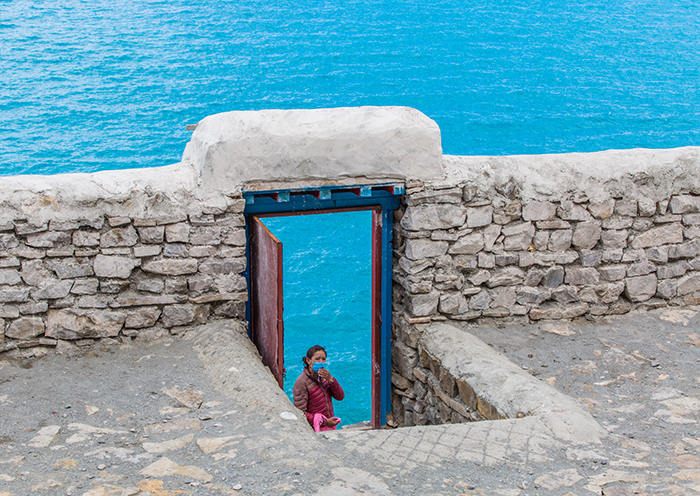







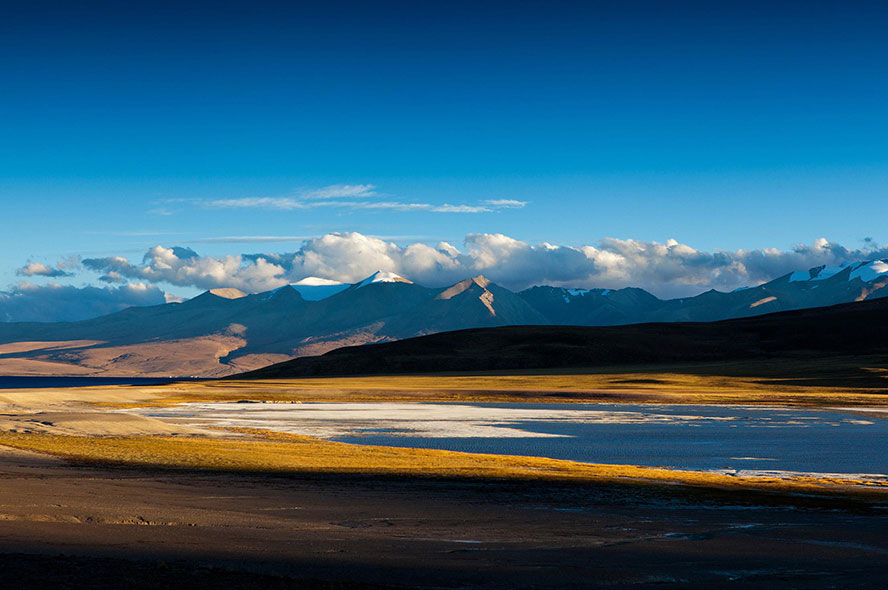
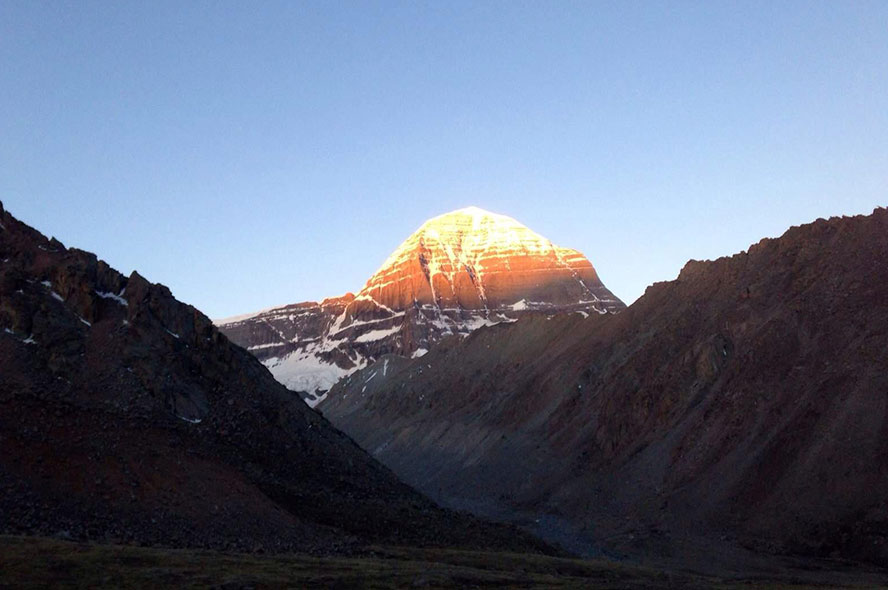
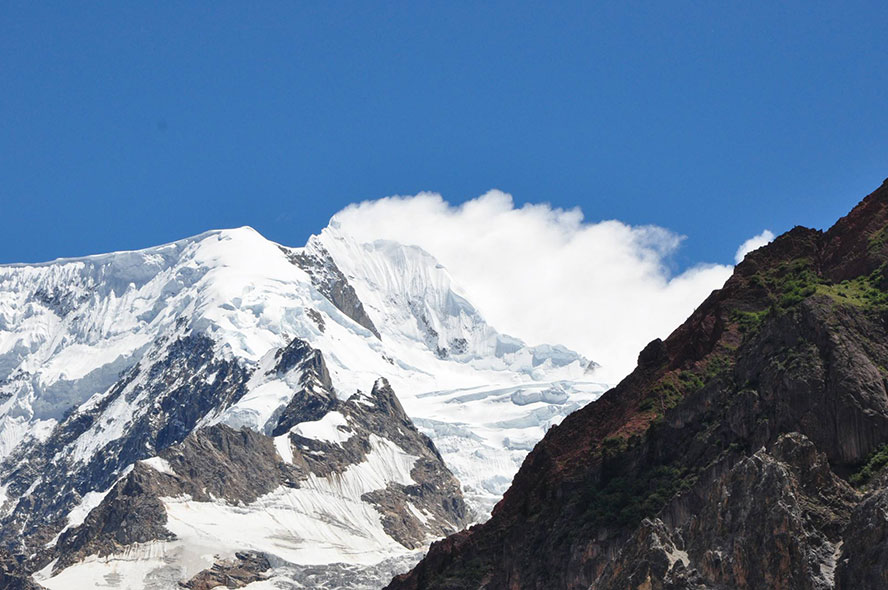
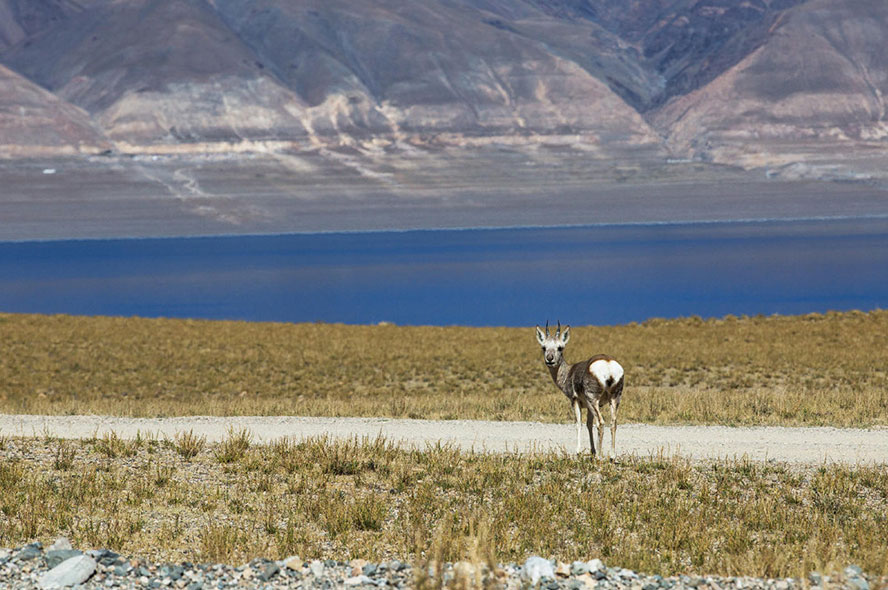






 Data in submission...
Data in submission...